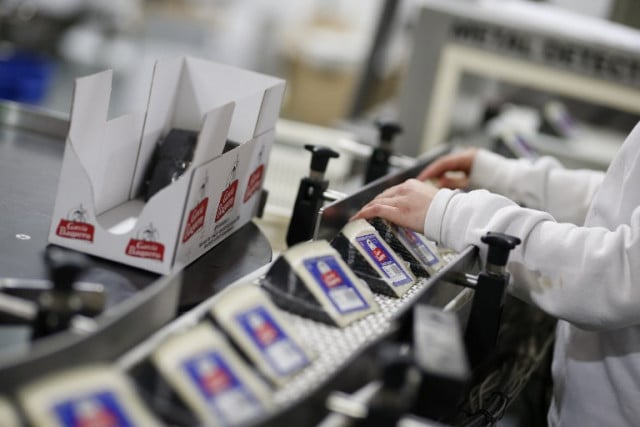
An employee of Garcia Baquero cheese manufacturer works at the production line of the company's factory in Alcazar de San Juan. Photo: Benjamin Cremel / AFP
In central Spain, the arid plains of La Mancha are famous for their windmills and Manchego, a cheese made out of ewe's milk that is one of the best-known representatives of the country's gastronomy.

